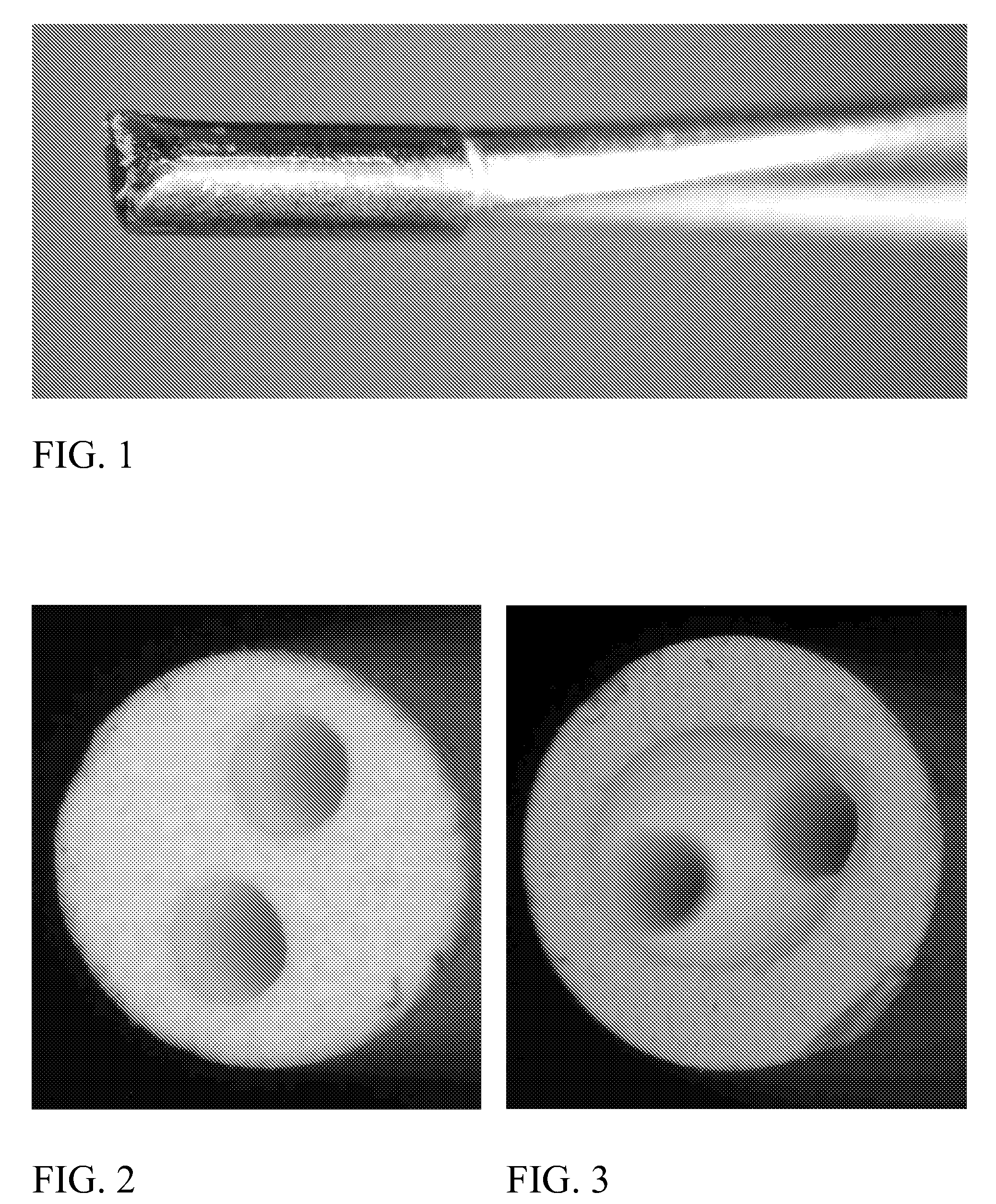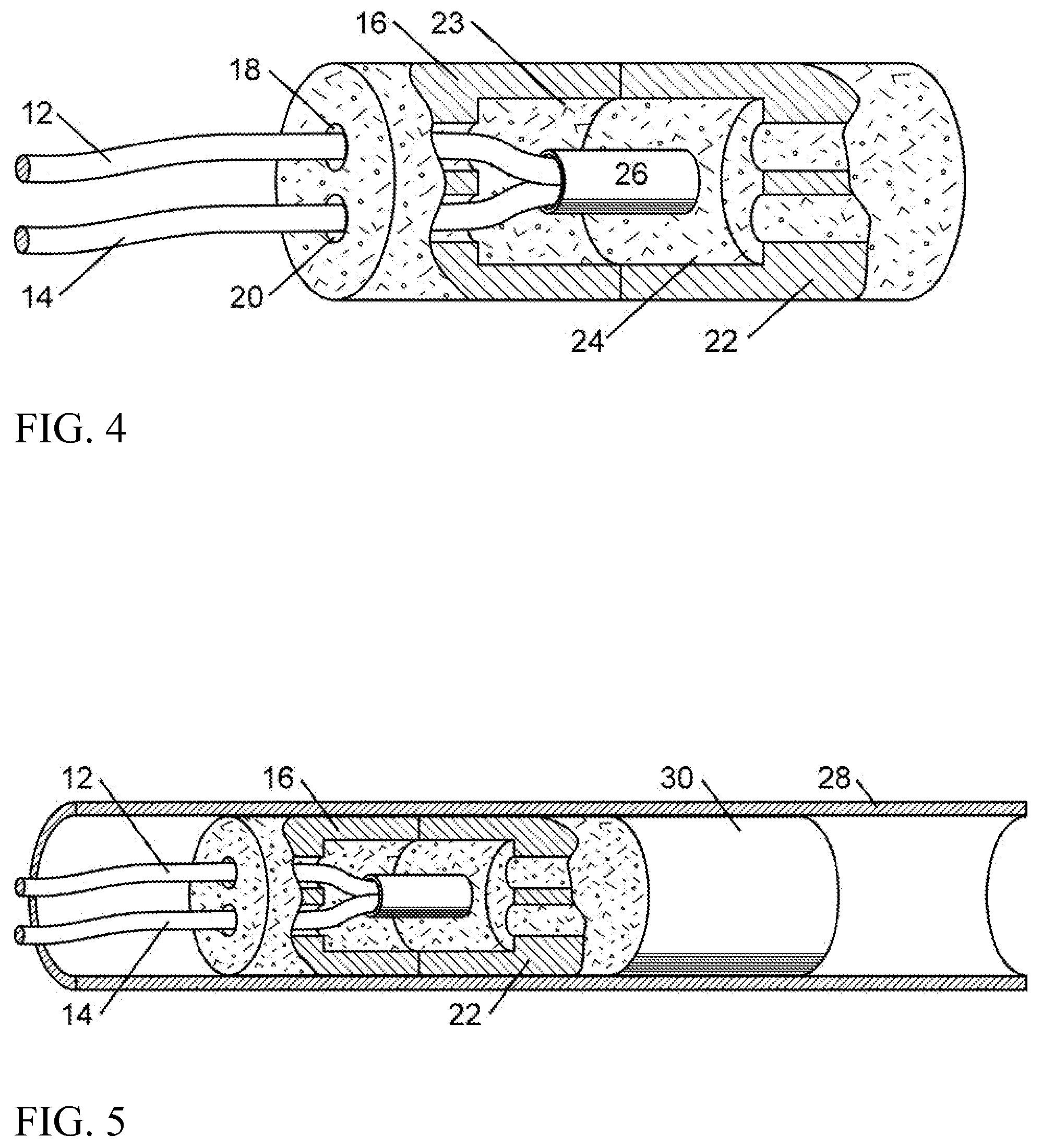High temperature thermocouple design and fabrication
a high-temperature thermocouple and design technology, applied in the field of thermocouple design and fabrication, can solve the problems of inability to maintain stable and accurate operation of conventional thermocouples, inability to reliably and predict the temperature of the measurement, etc., to achieve high melting temperature, low neutron cross-section, and high ductility
- Summary
- Abstract
- Description
- Claims
- Application Information
AI Technical Summary
Benefits of technology
Problems solved by technology
Method used
Image
Examples
Embodiment Construction
[0020]Referring now to the drawings in which like numerals represent like elements throughout the several views, the preferred embodiment of the present invention will be described.
[0021]The present invention employs a thermoelement wire combination of doped molybdenum and niobium / 1% zirconium alloy with a sheath of the same niobium / 1% zirconium. The molybdenum is doped with the elements tungsten, potassium, and silicon (typically dopants are present in the range of 100-300 ppm). Molybdenum is an excellent refractory metal but recrystallizes upon heating above 1200° C. The doped molybdenum selected for the present invention remains ductile after heating for 12 hours at 1800° C. Niobium has excellent ductility, a high melting temperature, and low neutron absorption. Alloying the niobium with zirconium increases its recrystallization temperature. Importantly, molybdenum and niobium are both less expensive than the metals used for conventional high-temperature tungsten / rhenium or plati...
PUM
| Property | Measurement | Unit |
|---|---|---|
| Temperature | aaaaa | aaaaa |
| Fraction | aaaaa | aaaaa |
| Fraction | aaaaa | aaaaa |
Abstract
Description
Claims
Application Information
 Login to View More
Login to View More - R&D
- Intellectual Property
- Life Sciences
- Materials
- Tech Scout
- Unparalleled Data Quality
- Higher Quality Content
- 60% Fewer Hallucinations
Browse by: Latest US Patents, China's latest patents, Technical Efficacy Thesaurus, Application Domain, Technology Topic, Popular Technical Reports.
© 2025 PatSnap. All rights reserved.Legal|Privacy policy|Modern Slavery Act Transparency Statement|Sitemap|About US| Contact US: help@patsnap.com



